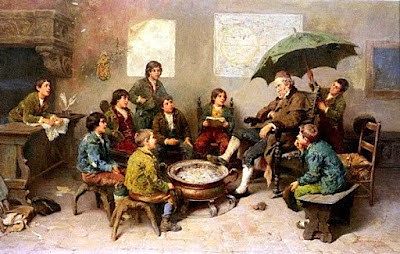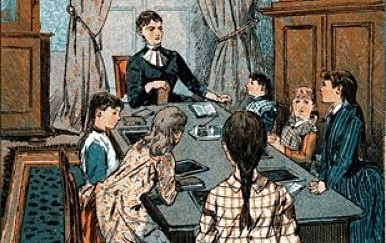Celebrating the Seasons in the Elementary Classroom: Autumn Ideas
★★★★★
It wasn’t until I started teaching first grade that I began to see the seasonal changes in our world through the eyes of a child. Their awe at the trees changing colors, the plentiful bouquets of colorful leaves they delivered with eager hands and sparkling eyes, and their appreciation of the colorful changes made to the classroom environment made each the transition into each new season an enjoyable one. There are plenty of fall crafts and art projects you can do with young students and most elementary teachers are familiar with those. However, are there other ways besides pasting, cutting, and coloring that will help heighten awareness to the sights, smells, and sounds of a new season? Can we touch on math, literacy, science, and history while learning in the moment?
Plan a leaf raking party
Each year, a parent from the classroom would offer their yard for our yearly leaf raking party. Armed with rakes, the children attempted to rake the leaves into large enough areas to jump into. The children greatly enjoyed the crisp air, working together to complete a task, and the crunch of the leaves as they jumped in the piles over and over again. An added bonus was always the drink and treats provided by the family hosting the party.
 Literacy connection: In reflection of the event, have each child share their highlight for the event or write a sentence for each of the five senses. “At our leaf raking party, I tasted… I heard… I smelled… I touched… I saw…” Discuss with your class the items the students wrote that pertain to autumn and usually are not experienced in the other seasons.
Literacy connection: In reflection of the event, have each child share their highlight for the event or write a sentence for each of the five senses. “At our leaf raking party, I tasted… I heard… I smelled… I touched… I saw…” Discuss with your class the items the students wrote that pertain to autumn and usually are not experienced in the other seasons.
Make applesauce
Aunt Ada’s American Applesauce
Ingredients:
approximately 10 apples (teacher should prepare by coring but not peeling)
3 T. brown sugar
sprinkle cinnamon
3 ½ c. water
Additional items needed:
paper bowls, table knives, plastic spoons, napkins
Students receive an apple or half of an apple (depending on the class size) and cut apples into small pieces using table knives. Dump apples into an electric skillet with a lid. Allow students to help complete the rest of the recipe by adding water, cinnamon, and brown sugar. Cook until apples are very tender. Dish out and serve.
Math connection: Discuss the measuring cup set and teaspoon/tablespoon set measurements. Have the students arrange them in order from smallest to largest. Literacy connection: Read the book How to Make an Apple Pie and See the World by Marjorie Priceman. Using similar format, write a book as a class entitled How to Make Applesauce and See Berks County (substitute with the county that the school is located).Display the leaves they gather for you
Encourage their exploration of the world outside your classroom by delighting over the nature items they bring into your classroom that they collected while at home or at play. Decorate your shelves, window frames, and desk with the pumpkins, corn shocks, and leaves they bring in. Staple up their handfuls of leaves around your bulletin board. Have the students write things that they are grateful for on the leaves with permanent markers and then dip into beeswax and hang as garlands or make a “We are grateful for…” tree.
Observe the change of a tree seen from your classroom window
If possible, choose a tree that changes vividly with the seasons and that you can easily see from a classroom window. Have the students draw the tree as it changes with each season – now, an autumn tree. Wait several months and direct their attention to it again when it stands bare with no leaves in the winter. Wait several more months and have them note the spring changes. At the end of the school year, draw it a final time in its summer glory.
Literacy and science: Read Tree, Seasons Come, Seasons Go by Britta Treekentrup or A Tree For All Seasons by Robin Bernard and discuss the changes that the students anticipate to see happening to the “classroom tree.”Take local seasonal field trips
Is there an orchard you could visit? A pumpkin farm? A fruit festival? An outdoor cleanup project for elderly neighbors? A colonial village or demonstration that shows how food preservation happened in the olden days? Check Macaroni Kid for events that your students may be able to participate in. Click on the “Change Your Town” tab in the upper right to check for events specific to your local area.

As you experience this autumn season with your students, direct their five senses toward the changes. As they see you notice and delight in the changes, hopefully they too will become active and enthusiastic learners and observers of the world around them.
Granted, I am writing this article from the perspective of autumn in the northern hemisphere. Here in Pennsylvania, we have a distinct and vibrant change from summer to fall. If you are in an area where autumn is not so scenic, you may have to make some changes or adaptations to these ideas to fit your area.
Related Items
Leave a Reply
Feedback